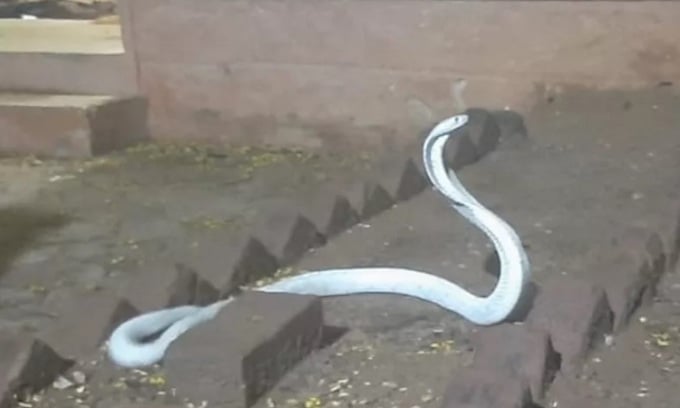India A highly venomous albino cobra drifted into a house during heavy rains and was moved to a forest by rescuers so it could survive.

The Indian cobra has a completely white body due to albinism. Photo: WNCT
Rainwater swept a 1.5-meter-long cobra into a house in the southern Indian city of Coimbatore on May 3, according to a spokesperson for the Wildlife & Nature Conservation Trust (WNCT). After discovering the snake, residents informed the WNCT, a non-profit organization dedicated to protecting and caring for wildlife through education , rescue, rehabilitation, anti-poaching, and conservation. The spokesperson said the snake was an Indian cobra, which is rare because it is albino, according to Newsweek .
Albinism is a genetic disorder that results in a lack of melanin pigment. Animals with albinism have white fur, skin, or scales and, in some cases, pink eyes. Albinism occurs throughout the animal kingdom , primarily in birds, reptiles, and amphibians, and less commonly in mammals, including humans.
The Indian cobra ( Naja naja ) is one of four large snake species responsible for the majority of serious snakebites in South Asia. While cobras rarely attack humans unless they feel threatened, their venom can be fatal in the most severe cases. Cobra venom can cause paralysis and even death if not treated promptly.
Because of the dangers involved, catching and safely relocating a cobra often requires a skilled snake catcher, as any mistake can have consequences. According to WNCT, after removing the snake from the house, the snake catcher handed it over to local authorities. Experts assessed the snake’s condition and concluded that it was healthy and ready for release. Finally, they released the snake into a biodiverse forest area that could provide a suitable habitat for it. WNCT emphasized that this was a necessary step to help conserve the species and contribute to maintaining ecological balance in the area.
Last year, snake catchers caught a 50-pound albino boa in a Florida backyard. Boas are large, nonvenomous snakes found in South America and parts of Central America.
An Khang (According to Newsweek )
Source link























![[Photo] National Assembly Chairman attends the seminar "Building and operating an international financial center and recommendations for Vietnam"](https://vphoto.vietnam.vn/thumb/1200x675/vietnam/resource/IMAGE/2025/7/28/76393436936e457db31ec84433289f72)











































































Comment (0)